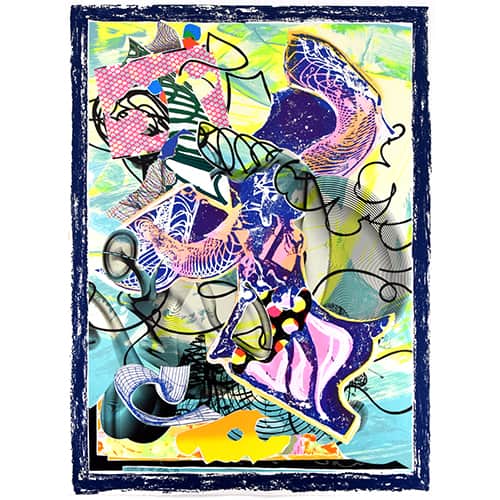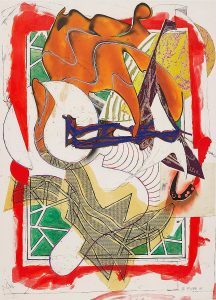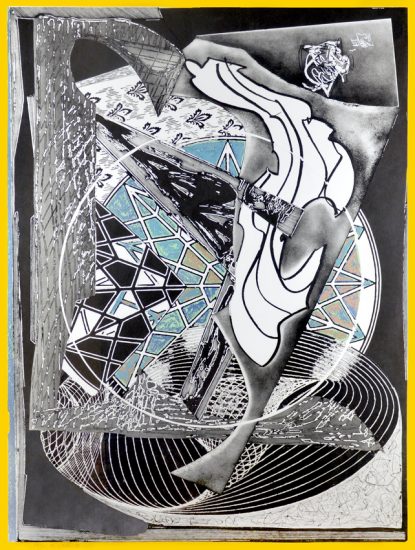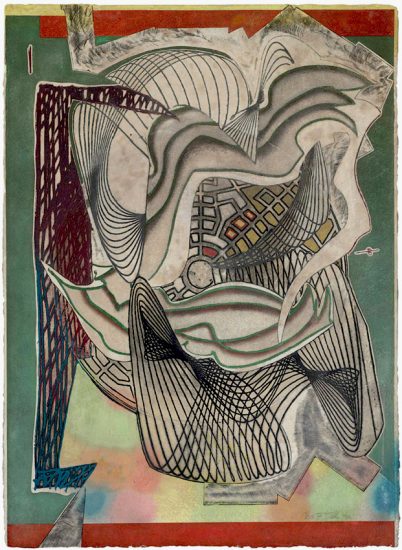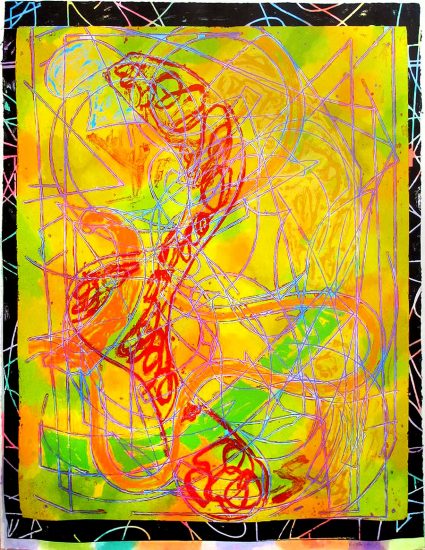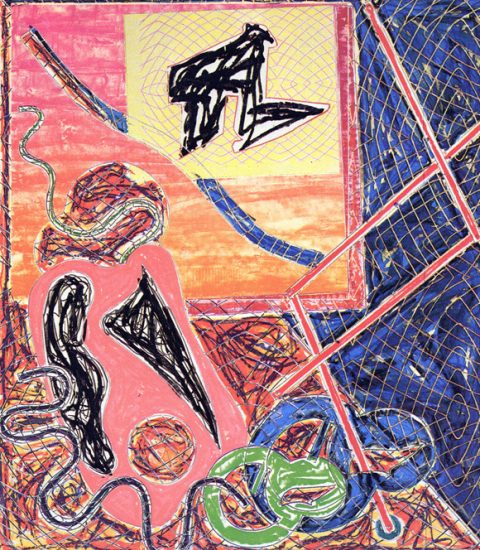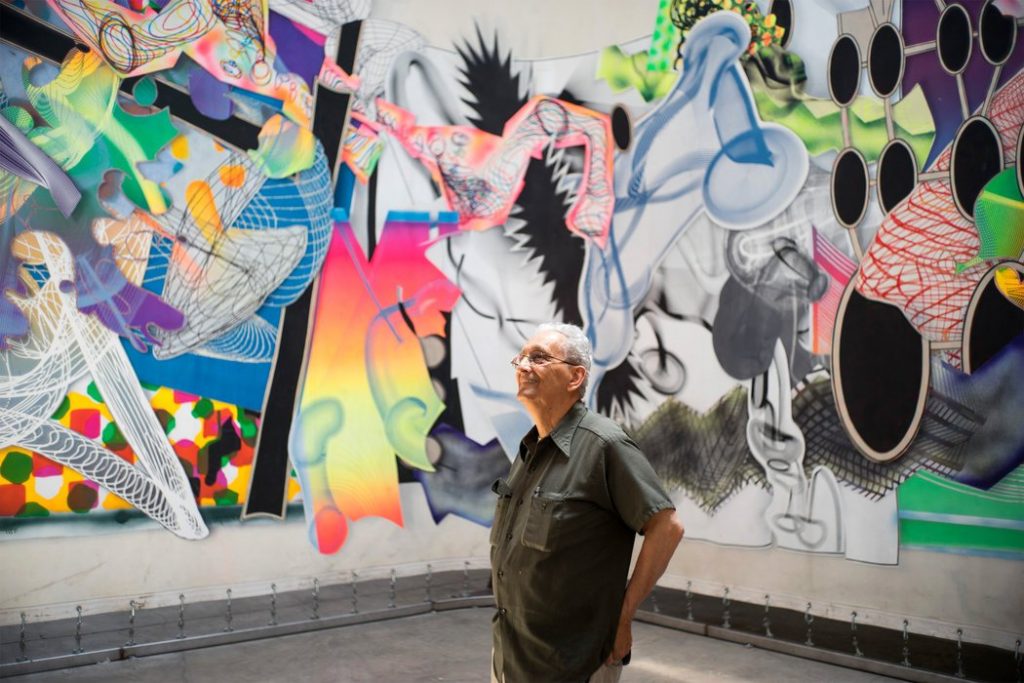
In 1982 Frank Stella began creating a series of mixed media works entitled Illustrations after El Lissitzky's Had Gadya Series. In these works, Stella masterfully combined lithography, etching, screenprinting, woodcut, and for the first time, linocuts to create a convincing visual narrative that is still beautifully abstract. Three years before the creation of the works, Stella saw a series of gouaches by the artist El Lissitzky. The series illustrated the lyrics of a Jewish Passover song Had Gadya, which through its repeating verses tells a story of the circle of life. Inspired by Lessitzky's narrative illustrations, Stella's colorful and dynamic prints marked an important point in the artist's oeuvre.
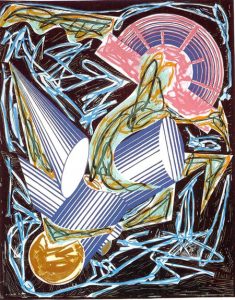
Illustrations after El Lissitzky's Had Gadya Series: Front Cover. Here we see the first appearance of volumetric cones and cylinders, generated by a newly-installed computer in Stella's studio.
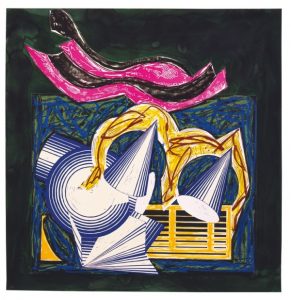
Illustrations after El Lissitzky's Had Gadya Series: One Small Goat Papa Bought for Two Zuzim. Beautiful organic shapes combine with strict geometric lines to create a piece that has undeniable narrative.
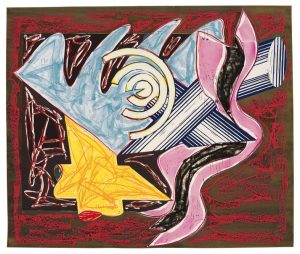
Illustrations after El Lissitzky's Had Gadya Series: A Hungry Cat Ate Up the Goat. The narrative of the song continues, strongly suggested through the title, which is as integral to the piece as the rich visual language.

Illustrations after El Lissitzky's Had Gadya Series: Then Came a Dog and Bit the Cat. The influence of El Lissitzky's earlier series is here quite evident in the whirling, almost chaotic movement of Stella's forms and lines.
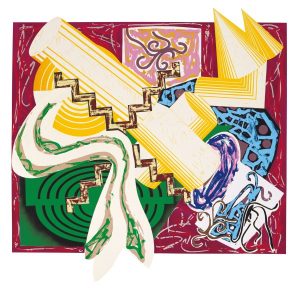
Illustrations after El Lissitzky's Had Gadya Series: Then Came a Stick and Beat the Dog. Here the geometric cones and cylinders retreat to the background, and the piece is dominated instead by energetic scribbles which form a complex texture.

Illustrations after El Lissitzky's Had Gadya Series: Then Came a Fire and Burnt the Stick. The glowing yellow rectangle, though placed behind various shapes, rises to the foreground echoing the powerful luminosity of fire and further adding to the collective narrative of the pieces.
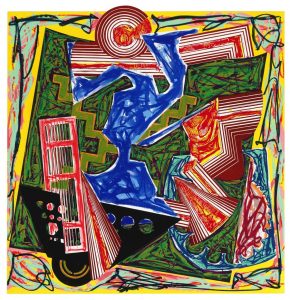
Illustrations after El Lissitzky's Had Gadya Series: Then Water Came and Quenched the Fire. A palette of warm greens, yellows and oranges create a beautiful juxtaposition with the jagged cold blue form that dominates the piece and brings to mind the refreshing rush of water.
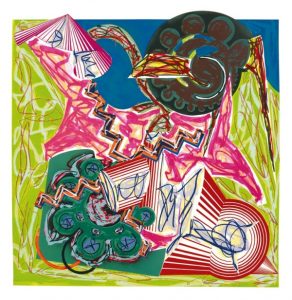
Illustrations after El Lissitzky's Had Gadya Series: Then Came an Ox and Drank the Water. There is a strong diagonal movement in the piece, created visually by the pink scribbles and cones that move from the upper left to the lower right. There is a superb balance in the composition yet the piece remains undeniably lively and dynamic.

Illustrations after El Lissitzky's Had Gadya Series: The Butcher Came and Slew the Ox. The geometric and sharp shading of the cones and cylinders that is present in other pieces of the series is here gone, replaced by energetic tough-edged streaks that, adding to the general frenzy of this work.
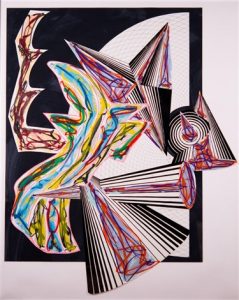
Illustrations after El Lissitzky's Had Gadya Series: Then Came Death and Took the Butcher. The most somber-hued and jagged of the series, the work instantly communicates its morbid title. Dominated by black and white, the vertically-oriented composition stands out in eerie contrast with its colorful and jumbled predecessors.
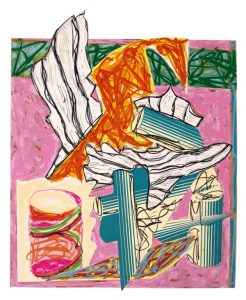
Illustrations after El Lissitzky's Had Gadya Series: And the Holy One, Blessed Be He, Came and Smote the Angel of Death. Reminiscent of dreamy clouds at sunset, a soft pink serves as the background for various playful pastel-colored forms. A rescue from the melancholy piece before it, the work posses all the tranquility and final grace suggested in its title.
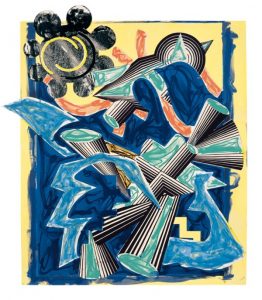
Illustrations after El Lissitzky's Had Gadya Series: Back Cover. Echoing the black-and-blue color palette of the front cover, the piece is a beautiful marriage of organic forms and geometric shapes.

